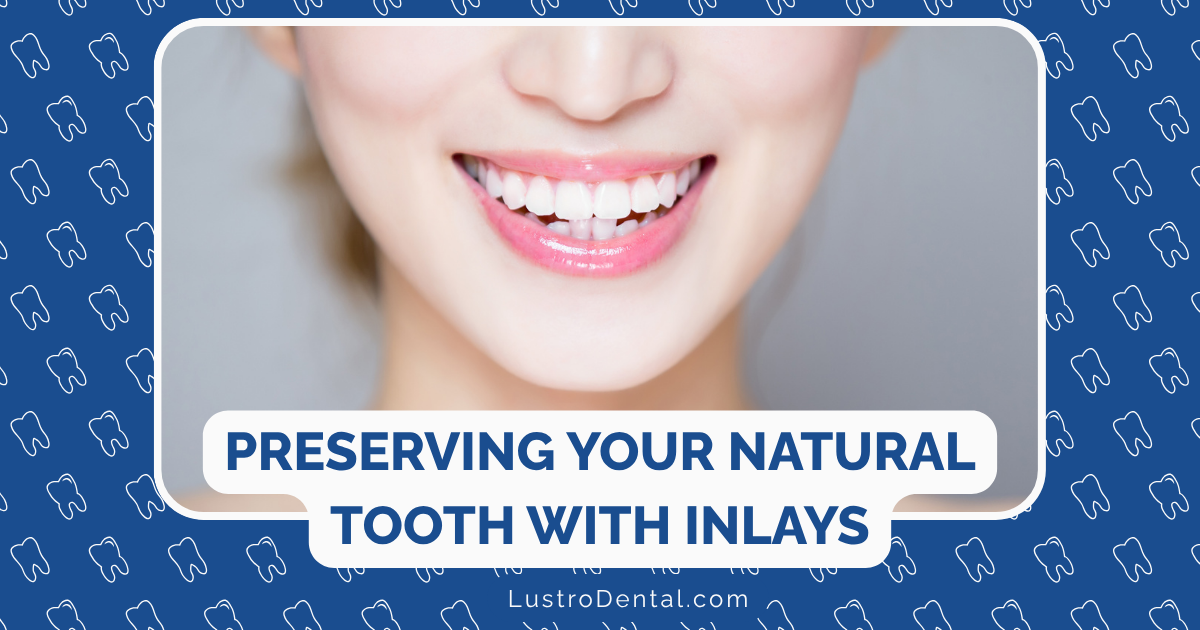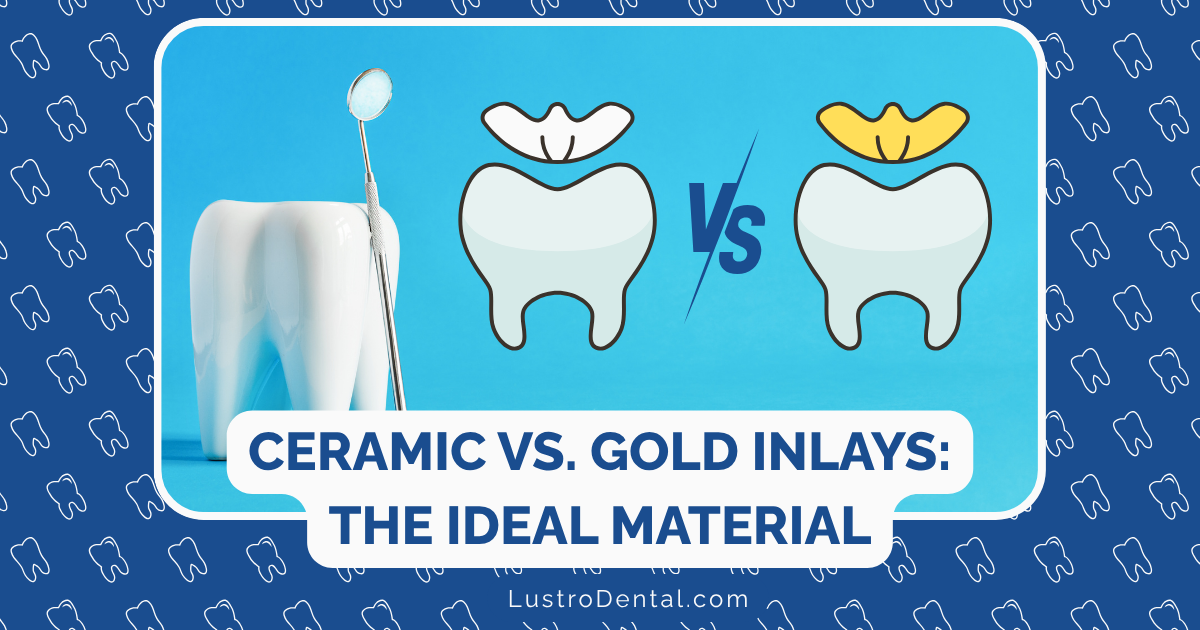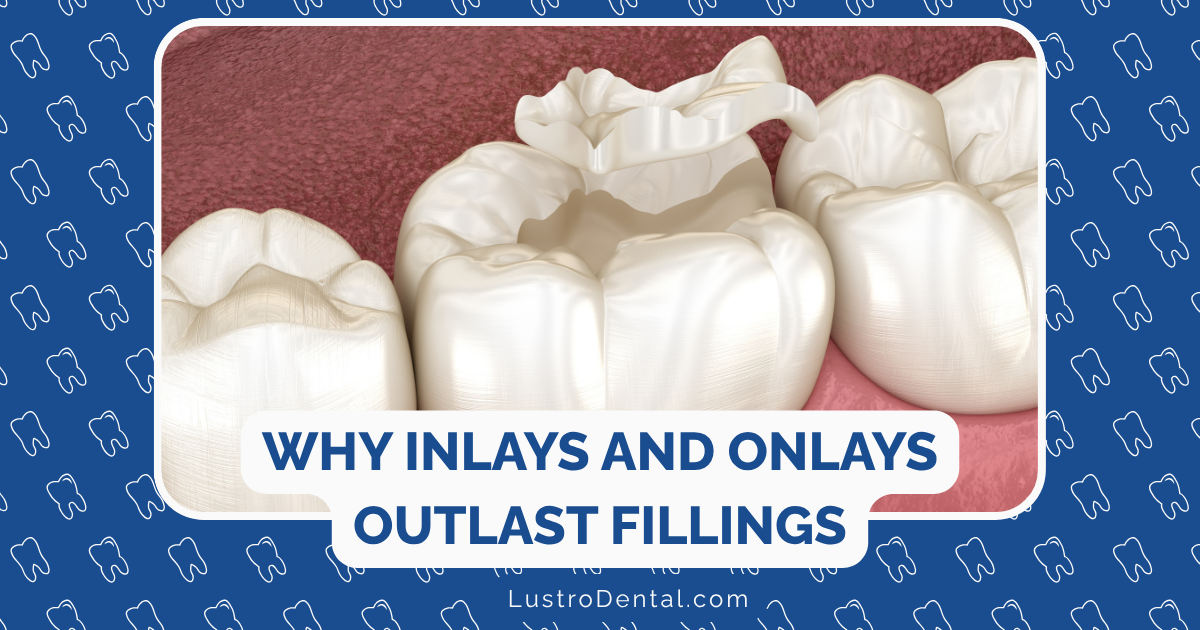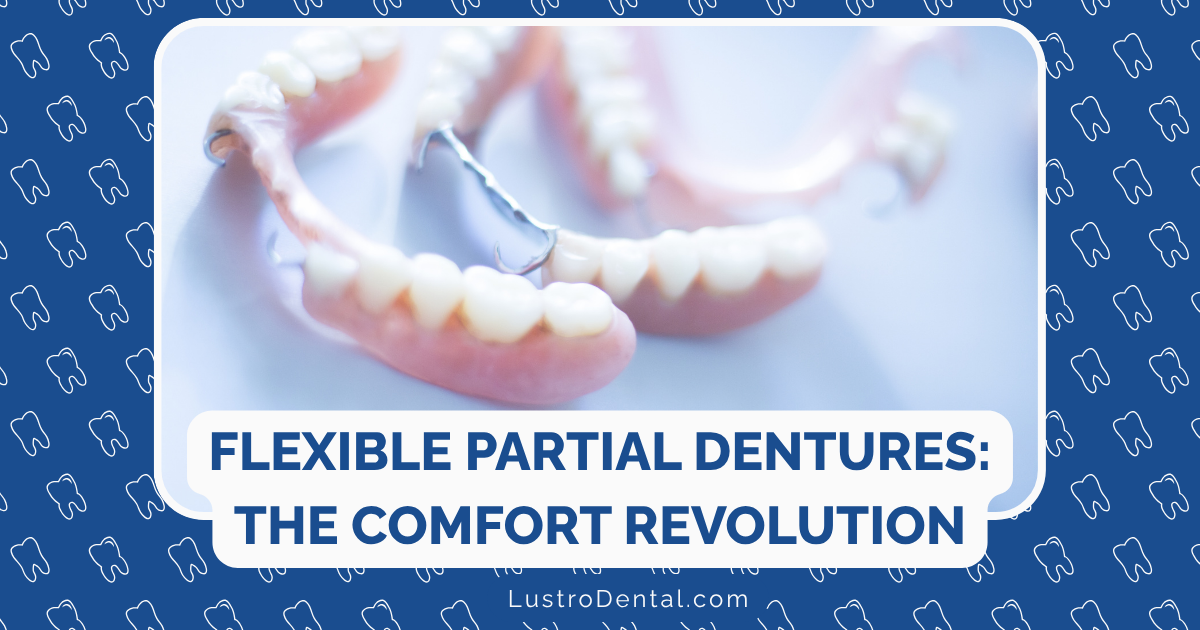When a Filling Isn’t Enough: Understanding Inlays and Onlays

You’re sitting in the dental chair, and your dentist has just examined your tooth with a concerned look. “The decay is too extensive for a regular filling,” they say, “but we can save the tooth with an inlay or onlay.” If you’re like most patients, this might be the first time you’ve heard these terms, leaving you wondering what exactly they are and why a simple filling won’t do the job.
As someone who’s guided countless patients through this exact scenario, I can tell you that understanding the spectrum of dental restoration options—from fillings to inlays and onlays to crowns—can help you make informed decisions about your dental health. Let’s explore when a filling isn’t enough and why inlays and onlays might be the perfect middle-ground solution.
The Spectrum of Dental Restorations: Finding the Right Fit
Dental restorations exist on a spectrum, with each option designed to address different levels of tooth damage:
Fillings: The First Line of Defense
Dental fillings are the most common restoration, used when decay is relatively minor and confined to a small area. They’re placed directly into the cavity after decay removal and hardened in a single visit.
Materials:
- Composite resin (tooth-colored)
- Amalgam (silver-colored)
- Glass ionomer
- Gold (less common today)
Best for: Small to moderate cavities with sufficient healthy tooth structure remaining.
According to the American Dental Association, more than 175 million fillings are placed in the United States annually, making them by far the most common dental restoration.
Inlays and Onlays: The Goldilocks Solution
When damage is too extensive for a filling but doesn’t warrant a full crown, inlays and onlays provide the perfect middle ground.
Inlays fit within the cusps (bumps) of your tooth, like a puzzle piece sitting inside the tooth’s chewing surface.
Onlays extend over one or more cusps of the tooth, covering a portion of the chewing surface while preserving more natural tooth structure than a crown would require.
Both are custom-made in a dental laboratory or with in-office CAD/CAM technology (like CEREC), then bonded to the tooth in a separate visit.
Crowns: Full Coverage Protection
Dental crowns cover the entire visible portion of the tooth above the gumline, providing maximum protection when a tooth is severely damaged or weakened.
Best for: Teeth with extensive decay, large fractures, after root canal therapy, or when significant structural support is needed.
Why Choose Inlays and Onlays? The Benefits Beyond Fillings
Understanding why dentists recommend inlays and onlays requires knowing their distinct advantages:
1. Superior Strength and Durability
Dr. Sarah Johnson, a prosthodontist at the University of Michigan School of Dentistry, explains: “Traditional fillings can create stress points in teeth, potentially leading to fractures over time. Inlays and onlays are bonded directly to the tooth, actually increasing its strength by up to 75%, rather than just filling a void.”
Research published in the Journal of the American Dental Association shows that while traditional fillings typically last 5-10 years, properly placed inlays and onlays can last 20-30 years with good oral hygiene.
2. Preservation of Tooth Structure
One of the guiding principles of modern dentistry is to preserve as much natural tooth structure as possible. Inlays and onlays excel in this regard.
“When we prepare a tooth for a crown, we typically remove about 63-76% of the natural tooth structure,” notes Dr. Michael Chen of the Advanced Restorative Institute. “With inlays and onlays, we often remove only 20-40%, preserving significantly more of the natural tooth.”
This conservation approach not only maintains tooth integrity but also keeps more options open for future treatments if needed.
3. Precision Fit and Reduced Sensitivity
Because inlays and onlays are custom-made in a laboratory (or with precise digital technology), they offer exceptional fit accuracy. This precision helps:
- Reduce bacterial leakage around the restoration
- Minimize post-procedure sensitivity
- Lower the risk of recurrent decay
- Ensure proper contact with adjacent teeth
4. Aesthetic Excellence
Modern inlays and onlays are typically made from tooth-colored materials that blend seamlessly with your natural teeth. Unlike amalgam fillings that can darken over time, ceramic and composite inlays and onlays maintain their color and appearance for years.
“Patients are often amazed that they can’t tell which tooth has the restoration,” says Dr. Lisa Rodriguez, cosmetic dentist at Aesthetic Dental Solutions. “That level of natural appearance simply isn’t possible with traditional metal fillings.”
When Is a Filling Not Enough? Recognizing the Signs
How do dentists determine when to recommend an inlay or onlay instead of a traditional filling? Several factors come into play:
1. Size of the Decay or Damage
The most common indicator is the extent of the cavity or fracture. When decay affects more than 50% of the tooth width or involves one or more cusps, a filling may not provide adequate support.
As Dr. Robert Wilson of Comprehensive Dental Care explains: “Large fillings in weakened teeth are like building a house on a compromised foundation. Eventually, something will give way.”
2. Location and Function of the Tooth
Molars and premolars, which handle the majority of chewing forces, often benefit from the added strength of inlays and onlays. These teeth experience forces up to 170 pounds per square inch during normal chewing—significantly more than front teeth.
3. History of Restoration Failure
If you’ve had multiple fillings fail in the same tooth, this suggests that a stronger, more durable solution like an inlay or onlay may be necessary.
According to research in the International Journal of Dentistry, teeth restored with inlays and onlays have a 93% success rate after 10 years, compared to just 60% for large composite fillings in similar situations.
4. Desire for Longevity
For patients seeking the most durable, long-lasting solution (without resorting to a full crown), inlays and onlays represent the gold standard. Their superior materials and fabrication methods translate to significantly longer service life.
The Inlay/Onlay Procedure: What to Expect
Understanding the process can help alleviate concerns about getting an inlay or onlay:
First Appointment: Preparation and Impressions
- Anesthesia: The area is numbed with local anesthesia for comfort
- Decay Removal: All damaged tooth structure and decay are carefully removed
- Tooth Preparation: The tooth is shaped to receive the restoration
- Impressions: Either digital scans or traditional impressions capture the exact shape of the prepared tooth
- Temporary Filling: A temporary restoration protects the tooth while your permanent inlay or onlay is being fabricated
Laboratory Phase (Typically 1-2 Weeks)
A skilled dental technician or CAD/CAM milling machine creates your custom restoration from the chosen material. This ensures precise fit and optimal function.
Second Appointment: Placement
- Temporary Removal: The temporary filling is removed
- Try-In: Your inlay or onlay is checked for proper fit, bite, and appearance
- Bonding: Once perfect fit is confirmed, the restoration is permanently bonded to your tooth using strong dental adhesives
- Final Adjustments: Any necessary refinements to the bite or contacts are made
Same-Day Options
Many dental offices now offer same-day inlays and onlays using CAD/CAM technology like CEREC or E4D. This approach allows the entire process to be completed in a single visit, eliminating the need for temporaries and a second appointment.
Material Choices: Finding the Right Option
Inlays and onlays can be crafted from various materials, each with distinct advantages:
Ceramic/Porcelain
Advantages:
- Excellent aesthetics that match natural tooth color
- Highly durable (10-15+ years with proper care)
- Stain-resistant
- Biocompatible
Best for: Visible teeth where aesthetics are important
Composite Resin
Advantages:
- Good aesthetics
- Less expensive than ceramic
- Can be repaired if damaged
- Less abrasive to opposing teeth
Best for: Moderate-sized restorations where cost is a consideration
Gold
Advantages:
- Exceptional durability (20-30+ years)
- Minimal wear to opposing teeth
- Outstanding marginal integrity
- Requires less tooth reduction
Best for: Non-visible teeth where maximum longevity is desired
Dr. Jennifer Martinez of the American Academy of Cosmetic Dentistry notes: “While gold has fallen out of favor aesthetically, it remains the most durable and biologically compatible material we have for dental restorations. For back molars, it’s still the gold standard—pun intended.”
Recovery and Aftercare: Ensuring Long-Term Success
Most patients experience minimal discomfort after inlay or onlay placement. Any sensitivity typically resolves within a few days. To ensure the longest life from your restoration:
- Maintain excellent oral hygiene with regular brushing and flossing
- Attend regular dental check-ups and professional cleanings
- Consider wearing a nightguard if you grind your teeth
- Avoid chewing extremely hard objects like ice or using teeth as tools
- Address any bite issues promptly with your dentist
Cost Considerations: Investment vs. Value
Inlays and onlays typically cost more than fillings but less than crowns. In 2025, average costs range from:
- Composite fillings: $150-$300 per tooth
- Inlays and onlays: $650-$1,200 per tooth
- Crowns: $1,000-$1,500 per tooth
While the initial investment is higher than a filling, the extended lifespan often makes inlays and onlays more economical in the long run. Many dental insurance plans provide partial coverage, typically categorizing them as “major restorations” with 50% coverage up to the plan’s annual maximum.
According to data from the American Dental Association, patients with inlays and onlays spend approximately 30% less on replacement and repair costs over a 15-year period compared to those who choose large fillings for similar conditions.
Comparing Your Options: Making an Informed Choice
To help you understand when each restoration type is most appropriate, consider this comparison:
| Feature | Fillings | Inlays | Onlays | Crowns |
| Damage Level | Minor to moderate | Moderate | Moderate to extensive | Extensive |
| Preserves Tooth Structure | ★★★★ | ★★★★★ | ★★★★ | ★★ |
| Strength | ★★ | ★★★★ | ★★★★ | ★★★★★ |
| Longevity | 5-10 years | 15-30 years | 15-30 years | 15-30 years |
| Aesthetics | ★★★ | ★★★★★ | ★★★★★ | ★★★★★ |
| Cost | $ | $$-$$$ | $$-$$$ | $$$-$$$$ |
| Number of Visits | Usually 1 | Usually 2* | Usually 2* | Usually 2 |
*Same-day options available with CAD/CAM technology
Is an Inlay or Onlay Right for You?
While only your dentist can make specific recommendations based on your unique situation, inlays and onlays are typically ideal for:
- Teeth with large cavities or fractures that exceed what a filling can support
- Replacement of large, failing fillings
- Patients seeking the most durable, long-lasting option without a full crown
- Those who value preserving maximum natural tooth structure
- Cases where aesthetics and strength are both priorities
Dr. James Wilson of the American Academy of Restorative Dentistry suggests: “Think of inlays and onlays as the conservative alternative to crowns. They provide much of the strength and protection of a crown while preserving significantly more of your natural tooth structure.”
Conclusion: The Thoughtful Middle Ground
When a filling isn’t enough but a crown seems excessive, inlays and onlays offer the perfect middle-ground solution. By providing exceptional durability, preserving natural tooth structure, and delivering outstanding aesthetics, these restorations represent the best of modern dentistry’s conservative approach.
As with all dental treatments, early intervention yields the best results. Regular dental check-ups can identify issues while they’re still manageable with minimally invasive solutions. By understanding your restoration options, you can participate more actively in decisions about your dental health and choose the solutions that best meet your needs for function, aesthetics, and longevity.







